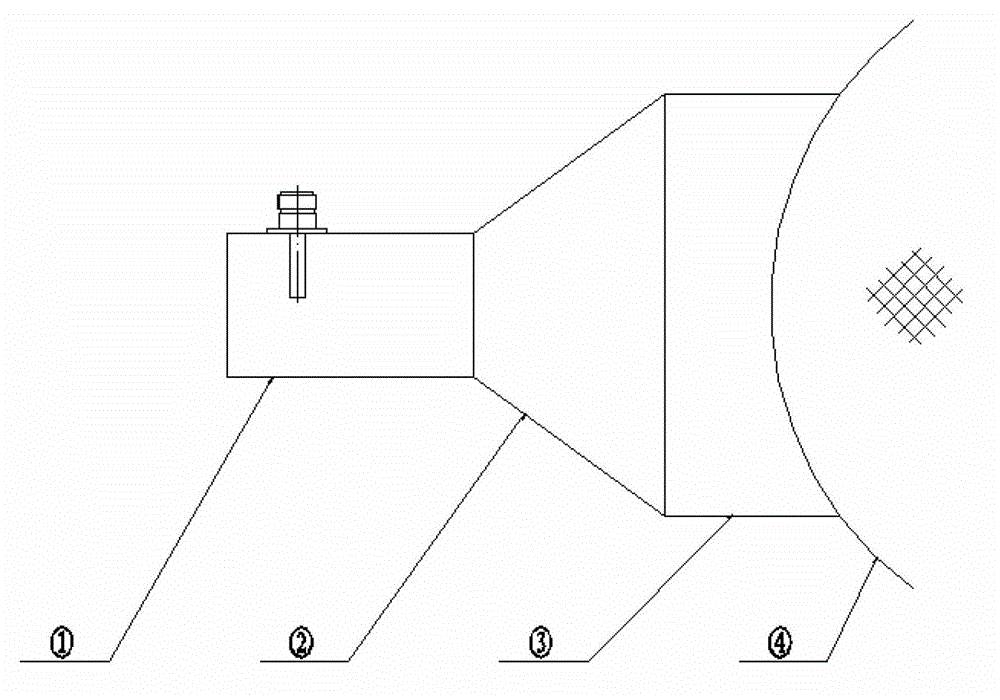Large-caliber series self-converging tissue lens focusing radiator
A converging lens, large-diameter technology, applied in microwave therapy and other directions, can solve the problems of unacceptable patients, shallow penetration depth, reduced heating depth, etc., and achieve the effect of extending the clinical application scope, uniform thermal field distribution, and good heat transfer.
- Summary
- Abstract
- Description
- Claims
- Application Information
AI Technical Summary
Problems solved by technology
Method used
Image
Examples
Embodiment Construction
[0011] As shown in the figure: a large-aperture series self-converging tissue lens focusing radiator, the radiator includes a coaxial waveguide converter 1, and the coaxial waveguide converter is connected with a large-aperture pyramidal horn antenna 2, and the large-aperture angle The other end of the cone horn antenna is a tissue converging lens 3 .
[0012] The large-aperture pyramid horn antenna includes pyramid horn antennas with different calibers.
[0013] The tissue converging lens is a human tissue lens naturally formed by utilizing the high relative permittivity of human tissue, so that microwave energy can be concentrated deep in the tissue.
[0014] Its working principle: coaxial waveguide converter: in order to ensure the main mode TE 10 Wave transmission, while suppressing the transmission of high-order modes, the standard rectangular waveguide wide side size is a=0.65λ, and the narrow side size b=a / 2.
[0015] A metal probe is used to couple the coaxial energy...
PUM
 Login to View More
Login to View More Abstract
Description
Claims
Application Information
 Login to View More
Login to View More - R&D Engineer
- R&D Manager
- IP Professional
- Industry Leading Data Capabilities
- Powerful AI technology
- Patent DNA Extraction
Browse by: Latest US Patents, China's latest patents, Technical Efficacy Thesaurus, Application Domain, Technology Topic, Popular Technical Reports.
© 2024 PatSnap. All rights reserved.Legal|Privacy policy|Modern Slavery Act Transparency Statement|Sitemap|About US| Contact US: help@patsnap.com








